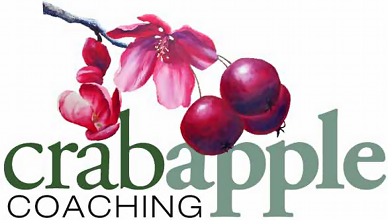 Thoughts from a Retirement Coach
Thoughts from a Retirement Coach
By Mariella Vigneux, MBA, ACC
Certified Professional Coach
In the previous issue you had a chance to measure how well you’re doing in retirement. I referred to it as taking your pulse. (See How well are you doing in retirement: Part one – taking your pulse.) Now we’ll look at ways to strengthen that pulse. Whether you’re bumbling around in a state of disorientation or smacking your lips in self-satisfaction, retirement is an ever-changing landscape and it doesn’t hurt every now and again to step back, look around, and re-establish your pathway.
With this in mind, I gathered together bits from articles I’d written during the past two years. I grouped them according to the same well-being factors discussed in the previous article, factors that contribute to emotional and social well-being in retirement, indeed, in life. Maybe you’ll find an idea or two to boost you up – to strengthen your pulse in retirement.
(And if you want more on any of these topics, you can put keywords in the search box and find related articles.)
Identity – an understanding and acceptance of your new identity in retirement
- Ask yourself the big questions: Who will I become, apart from my professional identity? What would really fulfil me? What will replace my daily routines when work does not dictate a clear direction? How do I ensure a happy, healthy and meaningful retirement, free from resistance, fear, and diminished self-esteem?
Self-Knowledge – awareness of your values, strengths, learning style, etc.
- Spend time getting to know yourself. Discover how you fit in the world, what strengths you have that can benefit others, what makes you feel elated getting up each morning, what gives you a sense of purpose, what makes you feel valued.
- Become comfortable with the disorientation that comes with retirement and stay in this learning phase, as it will provide clarity and confidence.
Sense of Purpose – meaningful goals and a sense of life purpose, as well as at least one activity in which you feel challenged, engaged, and sometimes in a state of flow (being in the zone), an activity you are passionate about
- Consider creating a life vision statement. Three examples from people I know:
- “To create a nurturing space to facilitate my own and other’s creative potential.” This vision included solitude, autonomy, hard work, creativity, and harmony.
- “To make a difference, do some good, and have some fun.”
- “To create a more spacious existence.”
- Get involved in a ‘flow’ activity. This would be something in which you become totally involved in meeting a challenge, solving a problem, or discovering something new. The outcome is that you feel fulfilled, because you’ve lived up to your potential.
- Challenge yourself with physical adventure to trigger your amygdala.
- Actively seek kickass moments that don’t happen when working.
- “Our world is incomplete until each one of us discovers what moves us – our passion. No other person can hear our calling. We must listen and act on it for ourselves. To hear it, we need a positive environment that supports deep listening and truth telling.” – Richard J. Leider
Self-Esteem – confidence in yourself in retirement; a feeling of competence; the knowledge that you’ve found your place in the world; a belief that you can manage your environment to meet your needs
- Do things you love.
- Find internal rewards, rather than relying on external measures of success.
- Build on your strengths.
- Never look down when you’re climbing up. Keep the fear at bay.
- Find a way to feel valued.
- “Our deepest fear is not that we are inadequate. Our deepest fear is that we are powerful beyond measure. It is our light, not our darkness, that most frightens us. We ask ourselves, who am I to be brilliant, gorgeous, talented, and fabulous? Actually, who are you not to be? – quoted by Nelson Mandela during his inauguration speech, originally written by Marianne Williamson
Contribution – activities or ways of being in which you give to the world outside yourself, to something larger than yourself (future generations, social groups, nature, traditions, belief systems, or movements)
- Contribute to others (at least one other person).
- Consider your life legacy: “…the enduring impact you have on the world in the way you’ve changed how people think and act, long after you’ve been forgotten.” How will the world be different because you were in it?
Caring Relationships – quality relationships (family, friends, life partner) that are lively and changing; sexual intimacy; new and renewed friendships outside your old workplace, connection to one or more communities
- Build new relationships outside of work colleagues
- Recreate your relationship with partner/spouse
- Consider the four-hour rule: be apart four hours a day so that you’ll have lots to share when you come together again.
- Have independent friends.
- Keep the relationship lively, acknowledging that it’s constantly changing.
- Find the new balance (Who is more active, more social? Who does which tasks?)
Routine and Leisure – a balance between free-flowing leisure time and structured routine; a feeling of accomplishment, yet also relaxed contentment… enough yin to balance the yang
- Unlearn the puritan work ethic; measuring productivity isn’t necessary any more.
- Don’t get sucked into the vortex of tasks, duties, meaningless time fillers, and work that others want us to do for them.
- Create enough structure without rigidity.
- Balance leisure and doing. Find something for the mind, the body, and the soul – e.g., reading, skiing, and listening to birdsong. Create ease and flow, a carefree, relaxed life, with fulfilling endeavours, structure, and routine.
- “Talent develops in tranquillity, character in the full current of human life.” – Johann Wolfgang von Goethe
Positive Emotions and Frame of Mind – A positive approach to retirement, supported by a mindset of curiosity, acceptance and resilience; continued personal growth and development; autonomy of thought and action
- Focus on what is working now and what worked for you in past transitions in your life. My friend’s mother used to say, “Keep your eye on the doughnut, not on the hole.” It worked for her; she lived a full life, dying peacefully at 88 years of age.
- Acknowledge that this time of our life is incredibly rich with possibilities – and we’re well placed to grab them. We know ourselves fairly well by this age and stage. We know our strengths and trigger points, our needs and wants. We’ve been through enough experiences that they’re starting to repeat themselves. We know how to build on our gifts, misfortunes, and successes. So, we have all the necessary elements to recreate ourselves in retirement – to burst forth into a glorious new form, whatever form we choose to take.
- Consider the 8 Rs of retirement. They are foundational steps for building competency in retirement.
- Reset your frame of mind
- Recognize your value
- Reshape your identity
- Redefine your purpose
- Rekindle your passions
- Release your old life
- Rebuild new life structures
- Recreate possibilities
As you re-establish your pathway forward in retirement, consider the words of Dawna Markova:
“What’s unfinished for you to give? In the thousands of moments that string together to make up our lives, there are some where time seems to change its shape and a certain light falls across our ordinary path. We stop searching for purpose, we become it. Looking back, we might describe these moments as times when we were at our best, when the gifts we were born with and the talents we have developed were braided with what we love and the needs of the world”
